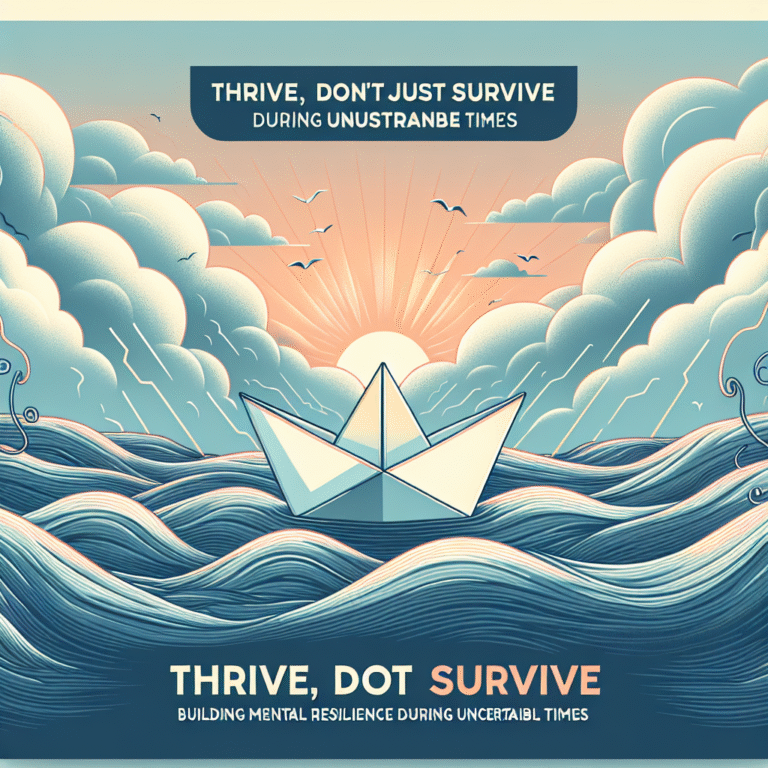
Harnessing Behavioral Psychology: Transforming Organizational Culture for Enhanced Performance
Introduction
In today’s fast-paced business environment, organizations increasingly recognize that success hinges not just on strategies or products, but on the culture that permeates their workplace. A thriving culture fosters engagement, enhances performance, and drives innovation. At the heart of this transformation lies the application of insights from behavioral psychology. Harnessing Behavioral Psychology: Transforming Organizational Culture for Enhanced Performance is more than a conceptual framework; it’s a critical pathway to achieving sustainable growth and organizational excellence.
In this article, we’ll delve into how harnessing behavioral psychology can reshape organizational culture, elevate employee performance, and ultimately benefit the bottom line. We’ll explore various case studies, practical strategies, and actionable insights designed to empower your organization to thrive.
Understanding Behavioral Psychology in Organizations
Before we dive into the applications, it’s crucial to understand what behavioral psychology is and how it relates to organizational culture. Behavioral psychology examines the interactions between individuals’ thoughts, emotions, and actions, emphasizing the influence of environmental factors on behavior.
The Core Principles
-
Cognitive Behavioral Theory: This principle posits that our thoughts directly influence our emotions and behaviors. In an organizational context, by reshaping employees’ thought patterns, companies can foster positive behaviors.
-
Social Learning Theory: Learning occurs through observation and imitation. Organizations can leverage this by creating environments where positive behaviors are modeled by leadership.
- Positive Reinforcement: This principle highlights the importance of rewarding desirable behaviors. By celebrating small wins, organizations can enhance morale and encourage continuous improvement.
The Connection to Organizational Culture
Organizational culture comprises the shared beliefs, values, and practices within a company. By applying behavioral psychology, businesses can instill a culture of engagement, resilience, and adaptive learning. This transformation is not an overnight process but requires strategic effort, consistent application, and a commitment to change.
Case Study: Google – A Beacon of Culture Change
Google is often cited as a prime example of a company that has successfully harnessed behavioral psychology to create an outstanding organizational culture.
Analysis
Google’s approach to create an open and communicative environment aligns perfectly with cognitive behavioral theory. The company encourages transparency and fluid communication, allowing employees to voice ideas and concerns without fear of repercussion.
Key Strategies Used by Google:
- Data-Driven Decisions: Google utilizes data to understand employee preferences and behaviors, allowing for adjustments in management practices.
- Flexible Work Environment: The company promotes flexibility in work hours and locations, aligning with individual employee needs.
Harnessing behavioral psychology in this way has assured Google’s place as a leader in innovation and employee satisfaction.
Transforming Mindsets for Enhanced Performance
To truly harness behavioral psychology, organizations must focus on transforming mindsets. This involves shifting how employees perceive challenges, feedback, and themselves.
Growth Mindset Philosophy
Implementing a growth mindset philosophy involves encouraging employees to see challenges as opportunities for growth rather than threats. Companies like Netflix have adopted this strategy effectively.
Case Study: Netflix
Netflix uses performance reviews that focus not only on outcomes but on effort and learning. By framing feedback positively and constructively, Netflix ensures that employees feel empowered to take risks and innovate.
Relevance of Growth Mindset:
- Increased Innovation: Employees at Netflix feel supported in taking creative risks, leading to groundbreaking content and services.
- Resilience: By fostering a growth mindset, the organization cultivates resilience among employees, which is crucial in a competitive marketplace.
Practical Strategies for Implementation
1. Foster Open Communication
Create an environment where feedback flows freely between teams and management. Regular check-ins, town halls, and anonymous feedback tools can facilitate this process.
2. Implement Training Programs
Offer training that focuses on developing a growth mindset and effective communication skills. Programs should integrate concepts from behavioral psychology to ensure deeper understanding and adoption.
3. Celebrate Successes
Recognize and reward achievements, no matter how small. Celebrating milestones reinforces positive behaviors and motivates teams to strive for excellence.
| Strategy | Benefits |
|---|---|
| Open Communication | Increases trust and reduces misunderstandings |
| Training Programs | Enhances skills and employee confidence |
| Celebrating Successes | Boosts morale and encourages ongoing performance |
Measuring the Impact of Culture Transformation
Once you have implemented change, measuring its impact is essential. Here are a few metrics organizations can use:
- Employee Engagement Surveys: Regularly assess employee sentiments and engagement levels.
- Performance Metrics: Track productivity and performance indicators before and after implementing psychological strategies.
- Retention Rates: A positive culture often leads to higher retention rates, indicating employee satisfaction.
Case Study: Zappos – The Culture of Happiness
Zappos has a reputation for its ‘happy culture’ which stems from its uniqueness in applying behavioral psychology principles.
Key Takeaways:
- Core Values Alignment: Zappos places emphasis on aligning staff with core company values—a process that fosters commitment and job satisfaction.
- Employee Autonomy: By giving employees the freedom to express creativity and make decisions, Zappos cultivates a sense of ownership and enhances performance.
Actionable Insights: Steps to Get Started
-
Conduct a Cultural Audit: Examine the existing culture in your organization. Identify areas that align with psychological principles and those that require enhancement.
-
Train Leaders: Ensure that management is equipped with knowledge about behavioral psychology to lead by example.
-
Engage Employees: Involve employees in the culture transformation process. This not only builds buy-in but also leads to valuable insights.
- Iterate and Adapt: Culture transformation is an ongoing journey. Regularly assess initiatives, gather feedback, and refine approaches as necessary.
Conclusion
Harnessing Behavioral Psychology: Transforming Organizational Culture for Enhanced Performance is not merely a theoretical framework; it’s a vital strategy for organizations aiming to thrive in the modern world. By understanding behavioral psychology principles and applying them to shape organizational culture, businesses can unlock unprecedented levels of engagement, innovation, and performance.
As we reflect on the insights shared, it’s essential to remember that the journey of transformation begins with small, consistent changes. Cultivate a culture that values growth, communication, and celebration. The rewards will not only be seen in immediate performance improvements but in the long-term sustainability of your organization.
FAQs
1. How does behavioral psychology influence team dynamics?
Behavioral psychology helps understand the motivations and behaviors of team members, enabling better collaboration and a stronger sense of belonging.
2. Can small organizations benefit from these strategies?
Absolutely! Behavioral psychology principles can be tailored to suit organizations of all sizes. Smaller organizations often have the advantage of agility in implementing change.
3. What role does leadership play in cultural transformation?
Leadership sets the tone for culture. Leaders who embody the principles of behavioral psychology will inspire employees to adopt similar practices.
4. How long does it take to see results from cultural changes?
Results can vary, but organizations may begin to see changes in employee engagement and performance metrics within a few months of implementing strategies.
5. Are there tools available for measuring cultural change?
Yes, there are various tools available, including engagement survey platforms and performance tracking software, that can help measure the impact of culture transformation initiatives.
In conclusion, the journey of Harnessing Behavioral Psychology: Transforming Organizational Culture for Enhanced Performance is within reach for every organization. By embracing behavioral insights and making intentional changes, businesses can thrive amid the complexities of today’s work environment. The time for transformation is now—prepare to unleash the potential that lies within your organizational culture!

















